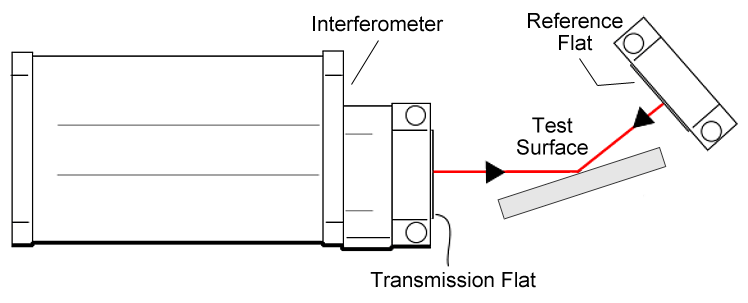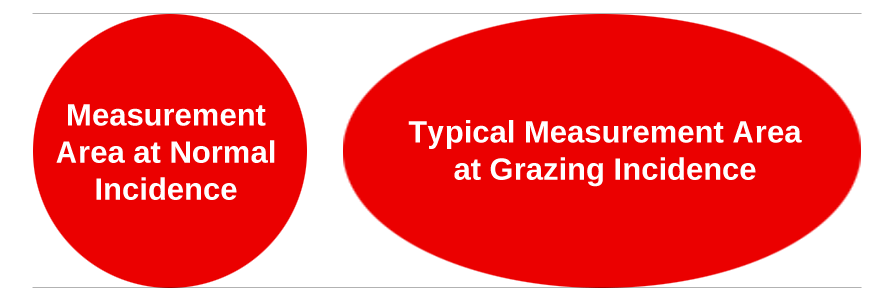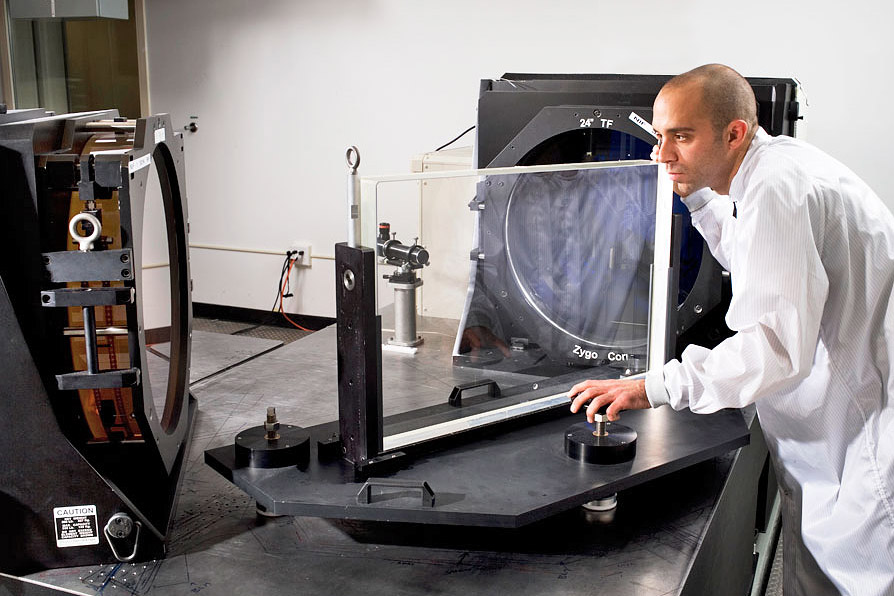Grazing Incidence Interferometry is a relatively simple method which is ideal for two unique, yet unrelated, applications:
- Measuring non-specular plano surfaces such as unfinished metal or ceramic
- Measuring plano surfaces that are larger than the measurement aperture of the interferometer

Grazing Incidence Interferometry Test Setup Diagram. Image Credit: Zygo Corporation
Measuring Larger Surfaces
It is useful for expanding the effective aperture of the interferometer, in one axis. The measurement area is around the same size as the beam when a laser interferometer's round measurement beam reflects off a test surface at normal incidence.

Relative Measurement Areas Using Normal Incidence (left) and Grazing Incidence (right). Image Credit: Zygo Corporation
Yet, the measurement area becomes elliptical when the beam is reflected off of a test surface at a lower angle, permitting the measurement of surfaces that are wider than the interferometer's aperture (or taller, depending on orientation). The lower the angle, the bigger the measurement area becomes.

Grazing Incidence Test Setup Measuring a Large Optical Window. Image Credit: Zygo Corporation
Measuring Non-Specular Surfaces
Carrying out interferometric measurements on surfaces that possess low reflectivity can be challenging as the measurement beam of the interferometer is scattered or absorbed by the surface as opposed to being reflected back into the interferometer.
By utilizing Grazing Incidence Interferometry, it could still be possible to measure such surfaces. Using this method, the measurement beam is reflected off of the test surface at a low angle and reflected back to the interferometer via a high-reflectivity reference flat.
The beam reflects off the test surface instead of being absorbed or scattered by it because of the low angle of incidence. The physics of how a surface's reflectivity is related to the angle of incidence is not discussed in this article.
It can be considered as somewhat analogous to the way a stone that is thrown at a low angle will bounce off the surface of a lake instead of splashing into it straight away.
Optimizing the Grazing Incidence Angle
The best angle for a grazing incidence setup is to have the test surface as near as possible to normal incidence, but it will be dependent on the desired size of the measurement area and the surface’s reflectivity.
Getting as near as possible to normal incidence minimizes:
- The loss of pixel resolution due to the angle
- The foreshortening of the measurement image
- The sensitivity of the interferometric scale factor setting

This information has been sourced, reviewed and adapted from materials provided by Zygo Corporation.
For more information on this source, please visit Zygo Corporation.